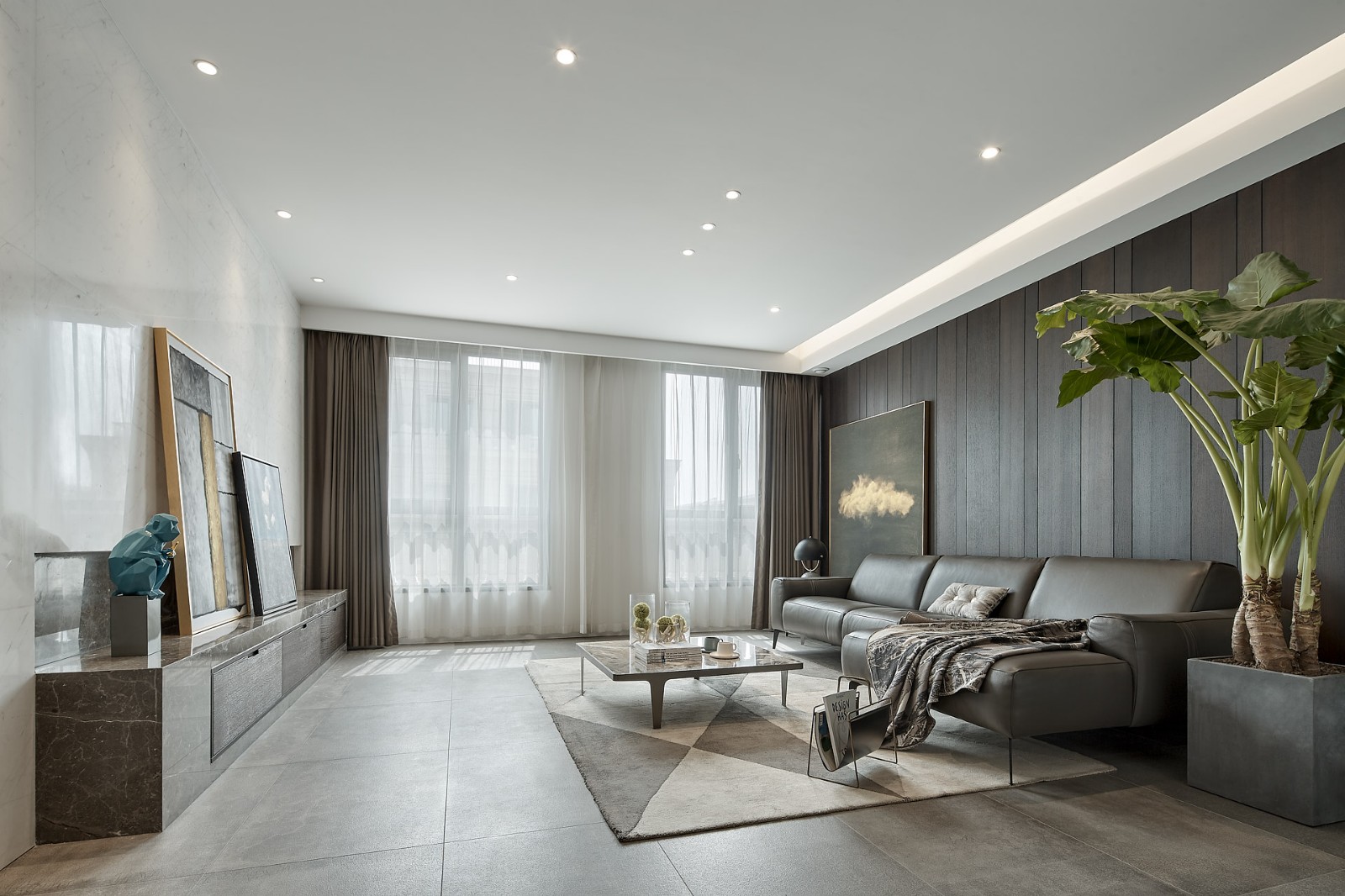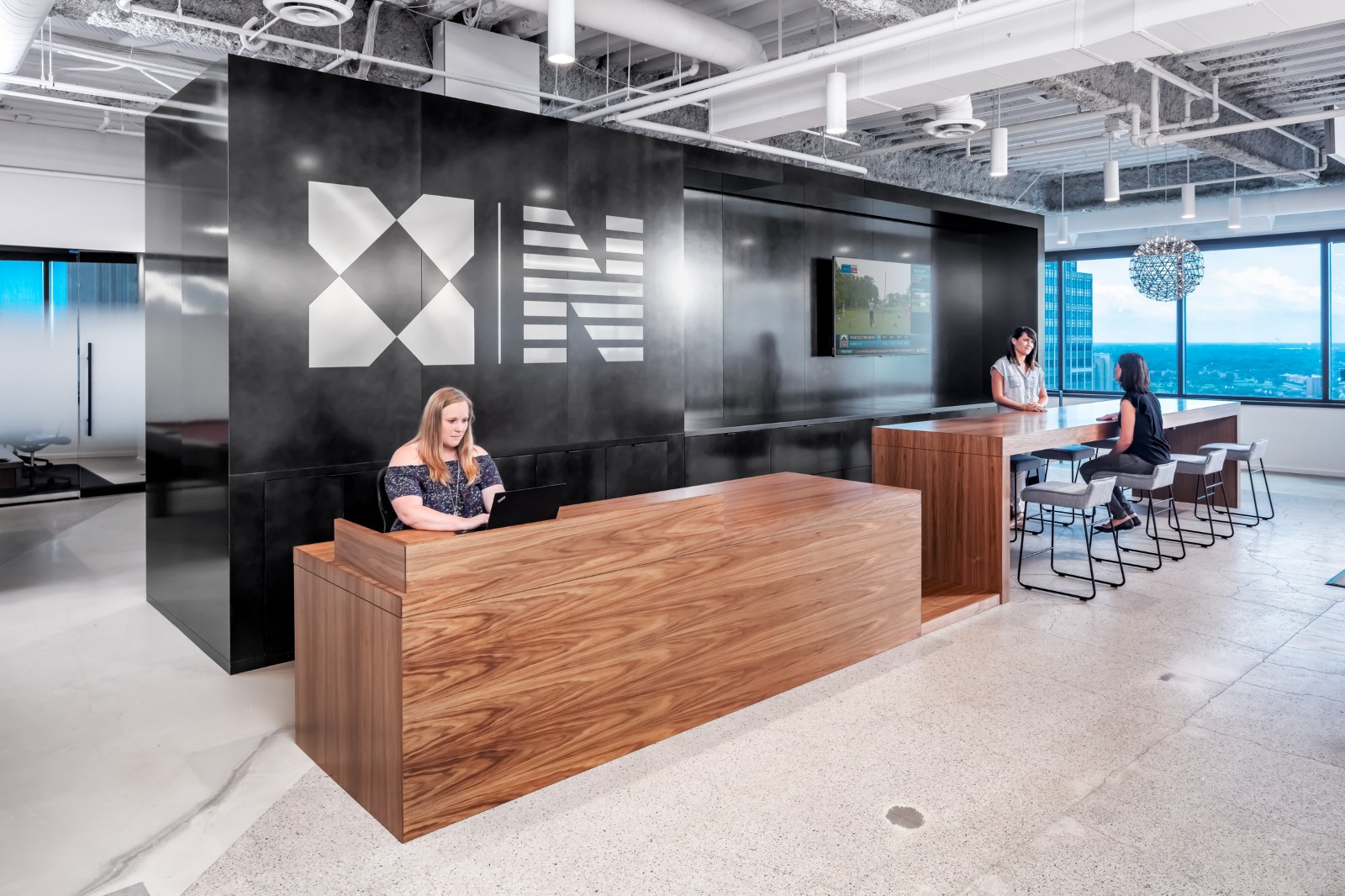Guardian Art Center in Beijing Büro Ole Scheeren
2018-01-24 23:00
View to Forbidden City and Jingshan Park . Image Courtesy of Buro Ole Scheeren
文化中心拍卖行是博物馆、画廊、市场文化和贸易的混合体.拍卖行将过去、现在和未来联系在一起。最终,拍卖行庆祝和传播对历史和传统的认识;它为文化价值观提供了一个舞台:尊重和责任、估价和预测、美丽和意义。拍卖行吸引和聚集人们,拍卖是欣赏艺术和文化的社会活动。这座建筑是文化交流的社会催化剂,从更广泛的意义上说,它是艺术的家园-它的制造者(艺术家)和它的饲养者(收藏家)的家。
Cultural Center An auction house is a hybrid between museum, gallery, market – culture and trading. An auction house links past, present, and future. Ultimately, an auction house celebrates and passes on awareness of history and traditions; it provides a stage for cultural values: respect and responsibility, valuation and prediction, beauty and meaning. An auction house attracts and gathers people and auctions are social events for the appreciation of art and culture. The building acts as a social catalyst for cultural exchange and imagines a home for the arts in a broader sense – a home for its makers (the artists) and its keepers (the collectors).
View to Ground Staircase. Image © Iwan Baan
博物馆位于卫报艺术中心,有1700平方米的无柱展览空间,最大限度地发挥了它的实用性和通用性,同时在第二个展区上扩大了展区,进一步扩大了博物馆的规模。地下室的两个大型拍卖会/展厅提供了更专业和正式的环境,完成了各种类型的空间。周围矩阵的较小,互联的房间的建筑像素容纳支持功能,并解放了建筑物的中央大厅的次要义务。
Museum At the center of the Guardian Art Center, a 1,700 square meter column-free exhibition space allows for maximum exibility and versatility, while expansive exhibition areas on the second oor further extend the museum. Two large auction/exhibition halls in the basement provide a more speci c and formal setting, completing the typological variety of spaces. The surrounding matrix of smaller, interconnected rooms of the architectural pixels accommodates support functions and liberates the building’s central halls from secondary obligations.
Interior View to Grand Staircase. Image © Iwan Baan
该建筑在整个季节性拍卖日历中进行拍卖/展览,但在一年的大部分时间里,将文化节目扩展为各种性质的特别展览、专题讨论会和活动-一个具有文化和教育使命的公共/私人博物馆。
The building stages and accommodates auctions/exhibitions throughout the seasonal auction calendar, but for most of the year expand the cultural programming into special exhibitions, symposiums, and events of diverse nature – a public/private museum with a cultural and educational mission.
Ground Floor Lobby. Image © Iwan Baan
围绕中央大厅是一个扩展的领域较小的画廊空间和辅助支持功能。该建筑在中性和特殊的空间之间航行,结合两者的各个方面,提供小型空间和可转换空间;以及一系列相互关联、更亲密的空间,用于具有不同特征的SPIc函数。
Surrounding the central halls is an extended realm of smaller gallery spaces and supplementary support functions. The building navigates between the neutral and the speci c, combining aspects of both by providing large scale spaces that are exible and convertible; along with a collection of interconnected more intimate spaces for speci c functions of distinct character.
Perspectival Section. Image Courtesy of Buro Ole Scheeren
这座大楼的核心是一台展览和活动机器。两个主要的无列空间被堆放在其足迹的中心,使其具有多种用途-简单、通用的天花板和OOR机制提供了很好的适应性。这两个空间在机库的规模上在建筑物内创造了一个分段的庭院-这个空间如此之大以至于几乎任何事情都可能发生。
The building is, at its core, a machine for exhibitions and events. The two main column-free spaces are stacked in the center of its footprint and enable a multitude of uses – simple, yet versatile ceiling and oor mechanisms provide easy adaptability. These two spaces create a sectional courtyard within the building at the scale of a hangar – a space so large that virtually anything can happen.
Auction Pre-Function Hall. Image © Shuhe
“卫报”艺术中心代表着一种新的混合文化观念,它超越了传统的现代艺术空间。将博物馆空间中的艺术展示和展示与展览和拍卖室的多功能结合起来,几乎可以进行任何类型的使用和活动。
Hybrid Art Space The Guardian Art Center represents a new hybrid concept for a cultural institution that transcends the traditional de nitions of a contemporary art space. Merging the display and presentation of art in its museum spaces with the multifunctional capacities of its exhibition and auction rooms allows virtually any type of usage and event to take place.
Interior View of Exhibition. Image © Alex Fradkin
几家餐厅和一座拥有116个房间的酒店无缝地结合在一起,可以欣赏到紫禁城的景色,创造了一个以艺术和文化体验为中心的包罗万象的生活方式理念。通过在其中央的“俱乐部塔”增加教育设施和地下室中的艺术保护部门,卫报艺术中心进一步体现了其作为世界第一定制拍卖行总部的地位。
The seamless integration of several restaurants and a 116-room hotel in the oating ring of the building with views to the Forbidden City creates an encompassing lifestyle concept centered on the experience of art and culture. Through the addition of educational facilities in its central ‘club tower’ and art conservation departments in its basements, the Guardian Art Center further manifests its position as the world’s rst custom-designed auction house headquarters.
Interior View of Guardian Office. Image © Shuhe
位于王府井大街1号紫禁城附近,与五四大道交汇处,中国最古老的艺术拍卖行的新总部,象征性地位于商业(王府井)和文化(五四大道)之间的十字路口。这座建筑嵌入了北京市中心的历史结构之中,在博物馆、活动空间和文化生活中心之间形成了一个新的机构。
Location Located in close proximity to the Forbidden City on No. 1 Wangfujing Street, at the intersection with Wusi Avenue, the new headquarters for China’s oldest art auction house is symbolically located at the crossroads between commerce (Wangfujing) and culture (Wusi Avenue). Embedded in the historic fabric of central Beijing, the building forms a new institution between museum, event space, and cultural lifestyle center.
Context Diagram. Image Courtesy of Buro Ole Scheeren
历史与现代性如何解决新旧、历史与现代、建筑尺度与语言的反差?这个项目的中心是如何将过去的存在和价值与当代的潜力和现实相结合的问题。该设计仔细地将建筑铭刻在其周围的环境中,以一种敏感的建筑诠释,将历史和传统与对文化艺术空间未来的当代愿景融为一体。建筑物下部的“象素化”体积微妙地指相邻的历史城市结构,与北京胡同的纹理、颜色和复杂规模相呼应,建筑在周边地区,并将历史沉积物“分层”到它的底座上。这座建筑的上部与周边现代城市的更大规模相呼应,形成了一个划桨的“环”,为这座建筑创造了一个内部庭院,并进一步与北京四合院的流行类型产生了共鸣。通过将亲密与不朽结合起来,并在这一结构中创造出多样的空间集合,大众融入了敏感的历史和文化环境,并通过一种明显低调的纪念性与北京的实力和气势产生了共鸣。
History and Modernity How to resolve the everlasting tension between the old and the new, the historic and the modern, the contrast of architectural scales and languages? This project is centered on the question of how to synthesize the presence and values of the past with the potentials and realities of the contemporary. The design carefully inscribes the building into its surrounding context, in a sensitive architectural interpretation that fuses history and tradition with a contemporary vision for the future of a cultural art space. The ‘pixelated’ volumes of the lower portion of the building subtly refer to the adjacent historic urban fabric, echoing the grain, color and intricate scale of Beijing’s hutongs, building upon its surroundings and ‘layering’ into its base the sediments of history. The upper portion of the building responds to the larger scale of the surrounding contemporary city in the form of a oating ‘ring’ that creates an inner courtyard to the building and further resonates with the prevalent typology of the courtyard houses in Beijing. By combining both the intimate and the monumental, and creating a diverse collection of spaces within this structure, the massing integrates itself into the sensitive historical and cultural environment and resonates with Beijing’s strength and imposing presence through an explicitly understated monumentality.
View to The Hutongs though The Perforation. Image Courtesy of Buro Ole Scheeren
中国-建筑的正面在其文化表达和中国的整合中扮演着一个特殊的角色:物质性、色彩和纹理与中国的符号和意义建立了抽象而微妙的对应关系。
Chinese-ness The building’s facades take on a speci c role in its cultural expression and Chinese integration: Materiality, color, and texture establish abstract and subtle correspondence with Chinese symbols and meaning.
View of North Entrance. Image © Iwan Baan
酒店的上环是由橡木、超大玻璃砖制成的,与邻近胡同和四合院的结构产生了共鸣。与附近紫禁城的帝国动机不同,这块砖代表了市民社会和价值观-在中国文化中,这是一个卑微和非精英的象征。这座建筑下部的灰色石头状像素被数千个圆形开口打孔,由把中国最重要的历史山水画之一-位于富春山的山水画-投射到它的正面,从而通过抽象的景观轮廓创造出一种微妙的光线。
The upper ring of the hotel is made of oating, over-sized glass bricks, resonating with the textures of the adjacent hutongs and courtyard houses. In contrast to the imperial motives of the nearby Forbidden City, the brick represents civil society and values – a humble and non- elitist symbol in Chinese culture. The grey stone-like pixels of the lower portion of the building are perforated by several thousand circular openings – generated by projecting one of China’s most important historic landscape paintings, Dwelling in the Fuchun Mountains, onto its facades and thereby creating a subtle light lter through an abstracted landscape silhouette.
Facade Concept Diagram. Image Courtesy of Buro Ole Scheeren
卫报艺术中心为艺术和文化创造了一个新的公民目的地,以促进文化文物和活动的交流、研究和欣赏-一个文化传播和收藏的载体,一个位于北京中心的新的艺术中心。
The Guardian Art Center creates a new civic destination for arts and culture that fosters the exchange, study, and appreciation of cultural artifacts and activities – a vehicle for cultural dissemination and collection, a new center for art, in the center of Beijing.
View from Drop Off. Image © Iwan Baan
Architects Büro Ole Scheeren
Location Wang Fu Jing Da Jie, WangFuJing, Dongcheng Qu, Beijing Shi, China
Architect in Charge Ole Scheeren
Partners Eric Chang, Dan Cheong
Associate in Charge Virginia Chiappa Nuñez
Photographs Iwan Baan, Shuhe, Alex Fradkin
Category Visual Arts Center
 举报
举报
别默默的看了,快登录帮我评论一下吧!:)
注册
登录
更多评论
相关文章
-

描边风设计中,最容易犯的8种问题分析
2018年走过了四分之一,LOGO设计趋势也清晰了LOGO设计
-

描边风设计中,最容易犯的8种问题分析
2018年走过了四分之一,LOGO设计趋势也清晰了LOGO设计
-

描边风设计中,最容易犯的8种问题分析
2018年走过了四分之一,LOGO设计趋势也清晰了LOGO设计
















































































